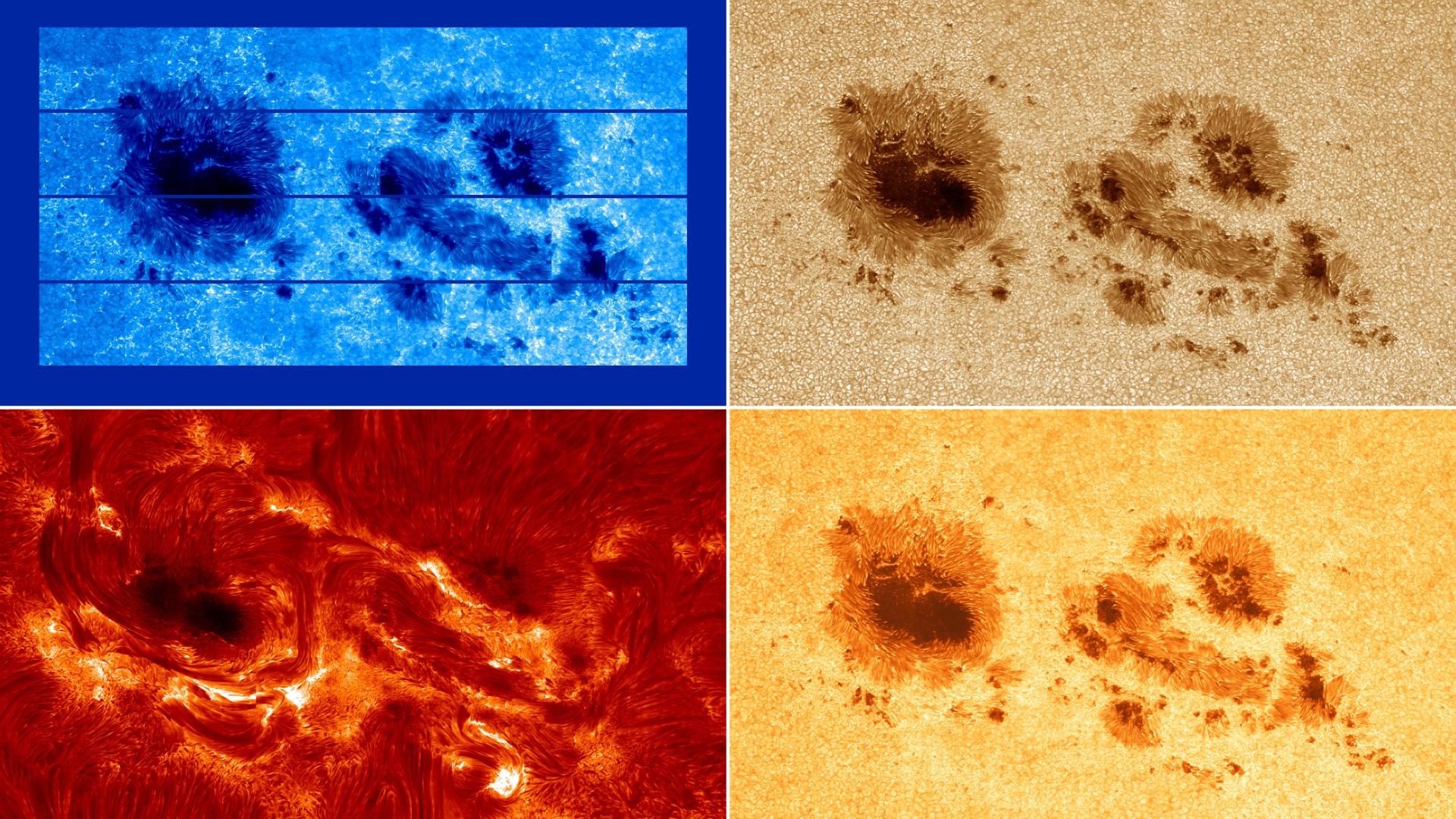Giant Magellan Telescope snags $17.5 million grant to test advanced optics

The Giant Magellan Telescope (GMT) just got a nice chunk of change to help develop and test the advanced technologies that will give the future observatory such sharp vision.
The U.S. National Science Foundation (NSF) has awarded a $17.5 million grant to the GMTO Corporation, which is developing the GMT and will operate the big scope once it gets up and running in the Chilean Andes in the late 2020s.
The money, the first awarded to the GMT project by the NSF, "signifies that the observatory will be important for the entire U.S. astronomy community," GMTO president Robert Shelton told Space.com.
"This award really enables us to accelerate our progress on critical components," Shelton said. "And I think that it allows us to kind of strut our stuff, to display a little bit the technical skills of the project team, which are manifest."
Related: The Giant Magellan Telescope envisioned in Chile (images)

The GMT will integrate seven 27.6-foot-wide (8.4 meters) primary mirrors into a single light-collecting surface 80 feet (24.5 m) across — three times wider than any optical telescope operating today. The big scope will also feature seven "adaptive secondary mirrors" (ASMs), each of which will be 3.3 feet (1 m) wide and just 2 millimeters thick, with hundreds of actuators affixed to its back.
"With those [actuators], we're able to bend this thin glass surface at about 1,000 times every second," GMTO project manager James Fanson told Space.com. "That is what we use to compensate for the distortion that's introduced by Earth's atmosphere. Millisecond by millisecond, we measure the distortion and correct it, so that we can essentially remove the atmosphere above the telescope and get very sharp images."
Breaking space news, the latest updates on rocket launches, skywatching events and more!
These extreme optics will give the GMT 10 times the resolving power of NASA's famous Hubble Space Telescope, GMT team members have said. Astronomers will use the GMT for a variety of high-impact projects, from hunting for signs of life in the atmospheres of nearby exoplanets to probing the nature of dark matter and dark energy, which dominate the universe but remain largely mysterious.
Making all this happen will be no walk in the park, however. For example, no other single-piece telescope mirror is larger than a GMT primary segment. And the surface of all seven GMT primaries must be shaped nearly to perfection: The margin of error is just 25 nanometers (1 millionth of an inch), about the width of a single glass molecule.
The seven segments must also be "phased" so that they align precisely and perform as a single piece of hardware. The newly awarded NSF money will help the GMT team demonstrate and practice doing just that at two custom-built phasing testbeds, one at the Smithsonian Astrophysical Observatory in Cambridge, Massachusetts, and the other at the University of Arizona in Tucson. The grant will also allow the team to partially build and test an ASM.
The grant-funded work will take place over three years and keep the GMT on track for "first light" in 2029, team members said. And the benefits will extend beyond the GMT, Fanson said, stressing that the technologies demonstrated will be employed by other telescopes in the future as well.
GMT development is going well overall, Shelton said, adding that the team has not yet seen any major impacts due to the coronavirus pandemic.
Primary mirror segments 1 and 2 are completely finished, and segment 3 is being polished at the University of Arizona's Richard F. Caris Mirror Lab now. Segments 4 and 5 are waiting to be polished, and segment 6 will be cast in the coming months, Shelton said. (The Mirror Lab is performing all this work, from casting to final polishing.)
In October 2019, the GMTO announced that it had signed a $135 million contract with MT Mechatronics and Ingersoll Machine Tools to build and install the telescope's mount, the 1,800-ton precision steel structure that will be the bones of the GMT.
The mount is going through its preliminary design review now, Shelton said.
"That is the one that now we really have to focus on, making sure that the design is going to satisfy our needs, because literally everything interfaces with the mount — the instruments, the mirrors, everything," he said. "So that really is the key right now."
Mike Wall is the author of "Out There" (Grand Central Publishing, 2018; illustrated by Karl Tate), a book about the search for alien life. Follow him on Twitter @michaeldwall. Follow us on Twitter @Spacedotcom or Facebook.

Michael Wall is a Senior Space Writer with Space.com and joined the team in 2010. He primarily covers exoplanets, spaceflight and military space, but has been known to dabble in the space art beat. His book about the search for alien life, "Out There," was published on Nov. 13, 2018. Before becoming a science writer, Michael worked as a herpetologist and wildlife biologist. He has a Ph.D. in evolutionary biology from the University of Sydney, Australia, a bachelor's degree from the University of Arizona, and a graduate certificate in science writing from the University of California, Santa Cruz. To find out what his latest project is, you can follow Michael on Twitter.
